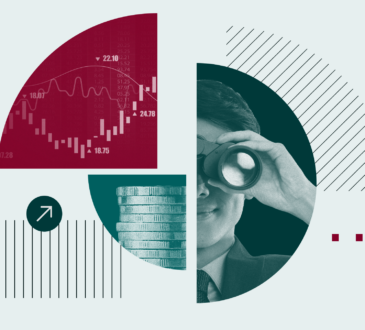5 Severe Market Crashes Have Occurred Over the Past 150 Years: Here’s 1 Lesson to Learn From Them All
To say that many people are questioning their investment strategies would be an understatement. The recent stock market turmoil brought on by the Trump administration’s tariff announcements is causing investors to wonder if it’s best to take their money out of the market right now.
When things feel so uncertain, it can be helpful to look to the past for some insight. Over the last 150 years, there have been 19 stock market crashes (when stocks fell by 20% or more), and five of those have been very severe, according to Morningstar research.
The worst of them show us just how bad things can get — and why it’s still worth staying invested when things get ugly. Here’s why.

Image source: Getty Images.
The 5 severe crashes over the past 150 years
Morningstar recently highlighted five of the worst market crashes and the eventual rebound that occurred after them. You’re probably familiar with some of them, but here’s a quick refresher:
- World War I and the influenza pandemic: One of the worst crashes occurred after World War I began, and the market didn’t recover until after the 1918 pandemic. If you had money invested around that time, it would have been cut in half.
- 1929 and the Great Depression: Panic in the market and the subsequent depression that followed caused the market to plunge 79% in just three years.
- World War II: The market began its decline again in early 1937 and was down by more than 47% just one year later.
- Vietnam, inflation, Watergate: An oil embargo in 1973, a chaotic troop withdrawal from Vietnam, and the political turmoil stemming from Watergate led to a nearly 52% decline in the market.
- The Lost Decade: The dot-com bubble bursting in 2000 led to a 47% decline at its lowest point. Just as the market was recovering about seven years later, the housing bubble burst, and the Great Recession began, causing the market to fall further.
It’s easy enough to gloss over the difficult times when they’re far in the past, especially if you haven’t had to experience them yourself. Those tough times brought severe economic pain for many, in addition to the investment declines.
But they’re not the end of the story.
One lesson to learn from them all
All of those severe downturns have one thing in common: The market eventually recovered every time.
Consider that a $50 investment made in 1929, the same year the market crashed and the Great Depression started, was worth nearly $108 two decades later — a nearly 116% gain. Similarly, a $500 investment just before the dot-com bubble burst in 2000 would have gained 295% over the following 20 years to reach about $1,975.
The S&P 500 has had a historical annual average return of 10.1% since 1957 (not accounting for inflation), but you had to ride out two of the five severe market crashes to get those returns. Put another way, the S&P 500 put up those impressive average annual returns despite two severe downturns.
As Morningstar analyst Emelia Fredlick aptly put it in her research, “Investors who stay invested in the market in the long run will reap rewards that make the turmoil worthwhile.”
A great place to put your money
I know much of the market may not seem worth investing in right now. I have some stocks that looked much more promising a couple of years ago than they do right now.
President Donald Trump’s tariffs have not only spurred the market turmoil, but they’ve also added a layer of complexity because the ever-shifting tariff announcements make it difficult to know which sector or company can weather an economic storm.
But one way you can ensure your money will be ready to bounce back right when the market does is by buying an index fund that tracks the S&P 500. One great option, and the place where I have most of my portfolio, is the Vanguard S&P 500 ETF (VOO 1.44%).
With this exchange-traded fund, your money will be spread across the largest publicly traded companies in the U.S. and across all major sectors. The benefit is that you won’t have to guess which company or which area of the economy will rebound against the backdrop of tariffs or recession.
You’ll also pay a very low expense ratio of just 0.03% annually. That works out to be just $0.30 each year for every $1,000 you have invested.
Like every other investment, there’s no guarantee of returns with the Vanguard S&P 500 ETF. But if 150 years of market history have taught us anything, it’s that the rebound will come. Since we never know when it will, it’s best to have some money invested so you don’t miss the gains when they start coming back.
Chris Neiger has positions in Vanguard S&P 500 ETF. The Motley Fool has positions in and recommends Vanguard S&P 500 ETF. The Motley Fool has a disclosure policy.

